What Is a 6500W Generator?
A 6500-watt generator is a powerful electric machine that converts mechanical energy into electrical energy to charge medium — to large-capacity household appliances, such as air conditioners, coffee makers, refrigerators, etc., and medium-capacity work or construction site appliances, like circular saws, air compressors, electric drills, etc.
By acquiring a 6500-watt generator, one can power almost all of the appliances used daily. However, a 6500-watt generator might not be enough to charge heavy-duty appliances. That said, a 6500-watt generator is available in different types, and based on the individual’s budget and preference, they can invest accordingly.
6500 Watt Portable Generator: A 6500-watt portable generator is a generator that can be carried anywhere. Since the weight of a 6500-watt generator is roughly 211 - 240 lbs, it becomes a little bulkier to carry around without the support of extended wheels and handles.
6500 Watt Inverter Generator: A 6500 Watt generator is an ideal generator for small offices and houses that require powering sensitive electronics, like large fax machines, office printers, laptops, WiFi, etc. Since these generators do not run on propane or diesel, they are considerably quieter and safer than gas or propane-based generators.
6500 Watt Solar Generator: A 6500-watt solar generator is the perfect solution for people who are looking for quiet, reliable, and toxic-free solutions to power and charge appliances for household emergencies, short road trips in their RVs, mid-range appliances in the work site, etc. There are different Jackery Solar Generators currently available that help in charging 99% of household appliances.
As one more forward in deciding the kind of a generator they should need or to simply understand if a 6500-watt generator can charge their RVs or household appliances, it is always recommended to get acquainted with some important terminologies, like:
Starting Wattage: It is the starting wattage that the appliance needs when it is powered up for the first time. For instance, with a 6500-watt generator, one can start an air conditioner that would require 5000 watts to start up. However, if the appliance requires 8000 or 10000 watts, then a 6500-watt generator is not considered ideal.
Running Wattage: As the name suggests, a running wattage is the continuous power output appliances require to operate smoothly once they have started. For instance, an air conditioner’s running wattage is 1000 - 1500 W. If plugged in with a 6500-watt generator, it can continuously run. However, if it is plugged in with a 500 W generator, then it won't be powered up.
Surge Wattage: A surge wattage is the additional power that a generator or a power unit would provide for a brief duration to accommodate the initial surge in power demand from certain appliances when they are powered up for the first time. For instance, the air conditioner's starting wattage requirement is around 5000 W. Since a 6500-watt generator has a maximum output of 6500 W, it is safe to say that a 6500-watt generator can easily power up such air conditioner units.
Watt-Hour: A watt-hour is the unit of energy representing the total amount of electrical energy consumed by an appliance over time.
What Size Generator Do I Need?
The size of the generator depends on multiple factors, like appliance wattage, the number of concurrently running appliances, and additional surge requirements.
Here is a step-by-step guide to understanding the size of the generator that you would need:
Step 1: Tool or Appliances
Make a list of the tools or equipment that you would require to power up using the generator. Consider noting appliances that you might get in the future, as this will help you easily calculate the size of the generator required.
Step 2: Running Wattage & Starting Watts
Now add all the running and starting wattages of the listed appliances. You can check the product's user manual or conduct a quick internet search to find the relevant information. Please note the appliance with the highest starting watts.
Step 3: Surge Watts
Now that you have listed the appliances along with their respective running and starting wattages, calculate the surge watt by adding the total running watts and the highest starting watts together. The result will represent the surge wattage that the generator should supply so that all the appliances can perform operations without any hassle.
This is better explained in the following illustration:

What Can a 6500 Watt Generator Run?
A 6500-watt running generator can power various appliances, such as refrigerators, ACs, electric clothes dryers, hair dryers, microwave ovens, etc. A 6500-watt generator is considered a mid-level generator, which means that it cannot easily run heavy tools like a 15000-watt generator, but it can effortlessly run appliances that are impossible to run with a 1000-watt generator. It is ideal for power outages at home, powering mid-range appliances on a work site, RV, road trip, or during off-grid living.
Will a 6500-watt Generator Run a House?
Yes, a 6500-running watt generator can produce enough wattage to power most of your home appliances. If you are living in a region that often faces power cuts, then you definitely need a power generator like a 6500-watt home generator. You can run lights, kitchen appliances, and even AC and fan. However, do not use too much heavy equipment together as it will exhaust the power faster than normal.

|
Home Equipment |
Running Watts |
Starting Watts |
|
Dishwasher |
1300 W |
1800 W |
|
Light Bulb |
70 W |
- |
|
Microwave |
1000 W |
- |
|
Television |
50 W |
- |
|
Blender |
300 W |
800 W |
Work Site
Most construction sites or remote locations require large generators to power heavy appliances. In such cases, a 6500-watt generator can power and even charge mid-range electrical appliances. That said, a 6500-watt generator would require additional handles and wheels to carry around the construction sites. A 6500-watt generator is suitable for reciprocating saws, electric drills, air compressors, electric stoves, and microwaves.
|
Work Site Equipment |
Running Watts |
Starting Watts |
|
Reciprocating Saw |
960 W |
- |
|
Electric Drill |
440 W |
600 W |
|
Hammer Drill |
1600 W |
2400 W |
|
Belt Sander |
1200 W |
2400 W |
|
Planer/Jointer – 6” |
1800 W |
4500 W |
RV
A 6500-watt generator works for both small and large RV appliances, including lights, air conditioning, heaters, and kitchen appliances — especially if you are planning to stay around nature for the weekend. You might need access to power to light up or heat up your RV. In such situations, a generator can fulfill the requirements. Choose a generator that matches your needs and the power capacity of your appliances, as a larger model may not be suitable for RVs; thus, making an informed choice will be proven best in the long run.

|
RV Equipment |
Running Watts |
Starting Watts |
|
Food Processor |
400 W |
- |
|
Toaster Oven |
1200 W |
- |
|
Space Heater |
1800 W |
- |
|
LED Lights |
30 W |
- |
|
Central AC – 10,000 BTU |
1500 W |
4500 W |
Off-Grid Living
Living off the grid is an adventure when you do not use commercial power but generate your own using natural resources, which is a good choice. For such experiences, you need basic appliances and power to run them. In this case, a generator always comes in handy. Whether you use a mobile charger or fan blower electric stove, a 6500-watt generator can run these devices. You must also remember that loading too much can lead to early energy exhaustion. Therefore, always consider the capacity before connecting multiple appliances to the generator.
|
Off-Grid Equipment |
Running Watts |
Starting Watts |
|
Mobile Phone Charger |
10 W |
- |
|
Electric Grill |
1650 W |
- |
|
Clothes Dryer - Gas |
700 W |
1800 W |
|
Electric Stove |
2100 W |
- |
|
Furnace Fan Blower – 1/2 HP |
800 W |
2350 W |
Jackery 6500W Portable Generators
Jackery currently does not offer a 6500-watt generator, but you can get other similar generators with less or more battery capacity. For example, the Jackery Explorer 2000 Plus Portable Power Station has an expandable capacity of 2042.8 Wh that can be expanded up to 24 kWh to charge most of the appliances you want. Here, we will explain different popular Jackery Solar Generators with varying capacities.
Jackery Explorer 2000 Plus Double Kit (6000 W/240 V/4 kWh)
If you want a solar generator that can power multiple electrical devices simultaneously without being too heavy, the Jackery Explorer 2000 Plus Double Kit (4 kWh) might be a good choice. It combines two Jackery Explorer 2000 Plus Portable Power Stations in parallel that expand the battery capacity up to 4085.6 Wh. You'll receive the parallel connector for free with this portable power station for a quick setup. If you want more power to charge multiple appliances that consume more, the battery capacity can be expanded by connecting up to 5*Jackery Battery Pack 2000 Plus with each portable power station attached in parallel.

Jackery Solar Generator 2000 Plus Kit (3000 W/120 V/6 kWh + 2*Jackery SolarSaga 200W Solar Panels)
The Jackery Solar Generator 2000 Plus Kit (6 kWh) has a large LiFePO4 battery capacity and is a great alternative to a 6500-watt generator. It's capable of charging 99% of household or RV appliances, ensuring you don't have to worry about finding nearby outlets. The best part about the solar generator is the double wheels and foldable handle attached to the Jackery Explorer 2000 Plus Portable Power Station for easy movement. It also includes two Jackery SolarSaga 200W Solar Panels built with monocrystalline silicon solar cells to efficiently convert the sunlight into electricity and store it in the portable power station.

Jackery Solar Generator 2000 Plus Kit (3000 W/120 V/24 kWh + 6*Jackery SolarSaga 200W Solar Panels)
If you are looking for a solar generator that's large enough to power most of your household or worksite appliances for a relatively longer time, then the Jackery Solar Generator 2000 Plus Kit (24 kWh) might be a more reliable choice. Its additional Jackery Battery Pack 2000 Plus can be attached or detached to increase or decrease the battery capacity according to your needs. Additionally, it is compatible with the Jackery Manual Transfer Switch that helps the power station connect with the home's circuit and start powering appliances quickly during power outages.

|
Product |
Output Rated / Surge Watts |
Capacity |
Appliances Running Time |
|
Jackery Explorer 2000 Plus Double Kit (6000 W/240 V/4 kWh) |
6000 W / 12000 W Surge Peak |
4085.6 Wh |
Dishwasher (1300 W): 2.6 H Light Bulb (70 W): 49.6 H Reciprocating Saw (960 W): 3.6 H Electric Drill (440 W): 7.8 H Electric Grill (1650 W): 2.1 H |
|
Jackery Solar Generator 2000 Plus Kit (6 kWh) |
3000 W / 6000 W Surge Peak |
6128.4 Wh |
Dishwasher (1300 W): 4 H Light Bulb (70 W): 74.4 H Reciprocating Saw (960 W): 5.4 H Electric Drill (440 W): 11.8 H Electric Grill (1650 W): 3.1 H |
|
Jackery Solar Generator 2000 Plus Kit (24 kWh) |
3000 W / 6000 W Surge Peak |
24513.6 Wh |
Dishwasher (1300 W): 16 H Light Bulb (70 W): 297.6 H Reciprocating Saw (960 W): 21.7 H Electric Drill (440 W): 47.3 H Electric Grill (1650 W): 12.6 H |
How Many Amps Does A 6500-Watt Generator Put Out?
A 6500-watt generator working at 240 V produces 27 amps, and similarly, a 6500-watt generator working at 120 V produces 54 amps. Let us understand this with an example.
Take into consideration the Jackery Explorer 2000 Plus Portable Power Station. It has a power capacity of 2042.8 Wh and operates efficiently at 44.8 V DC.
We can calculate the amps using the given formula:
Amp-hour (Ah) = Watt-hour (Wh) ÷ Volts (V) = 2042.8 Wh / 44.8 V = 45.6 Ah
What Is The Quietest 6500 Watt Generator?
Solar generators are among the quietest generators, producing sound around 30-45 dB. If you are looking for the best 6500-watt generator that is suitable for both indoors and outdoors and does not make noise, then go for a 6500-watt solar generator. Jackery does not have a 6500-watt generator, but the expandable Jackery Explorer 2000 Plus Portable Power Station has a Quiet Charging Mode.
You can combine two Jackery Explorer 2000 Plus Portable Power Stations to produce enough energy according to your needs. It has a 2042.8 Wh battery capacity and a 3000 W output port. The Jackery Explorer 2000 Plus Portable Power Station is a quiet generator that can be used to charge the majority of indoor, outdoor, and work-related equipment by expanding its capacity from 2 kWh to 24 kWh with the Jackery Battery Pack 2000 Plus.
How Long Does A 6500-Watt Generator Last?
A 6500-watt generator lasts depending on its usage and the appliances connected to it. Appliance wattage consumption plays a vital role in determining the running hours. The more power-consuming the appliances, the shorter the running time.
You can also calculate your generator's running time. Let's take into account the Jackery Solar Generator 2000 Plus Kit (24 kWh). Suppose you are charging a window AC unit (900 W), washing machine (500 W), and vacuum cleaner (600 W) at the same time.
Using the given formula, you can find the running time of the solar generator easily.
Working Time = Battery Capacity * 0.85 / Wattage Consumption of Appliances = 24513.6 Wh * 0.85 / 2000 W = 10.4 H.
Here, we multiply the battery capacity by 0.85 since there will be some power loss when charging the appliances.
Conclusion
If you face frequent power cuts in your area or love camping in the woods, power generators can be a wonderful commodity. A 6500-watt generator stores energy and allows you to easily run heavy appliances like refrigerators, ACs, and electric stoves in your RVs and home. Jackery Explorer 2000 Plus Portable Power Station is an even better solution for powering appliances indoors or outdoors. With its expandable power from 2 kWh to 24 kWh, you can easily run major appliances for long hours.
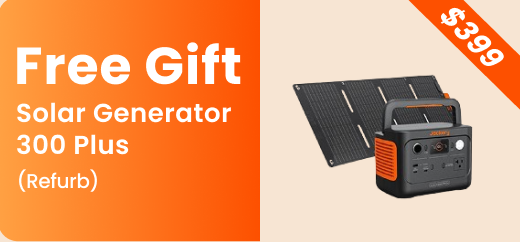


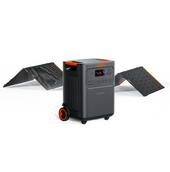


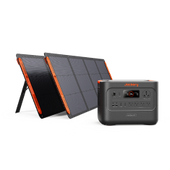


























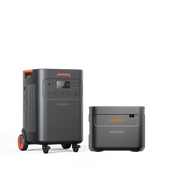







![[Add - on] Jackery Manual Transfer Switch for Explorer 5000 Plus - Jackery](http://www.jackery.com/cdn/shop/files/add-on-jackery-manual-transfer-switch-for-explorer-5000-plus-9017324.png?v=1754016782&width=170)


































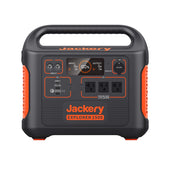
















































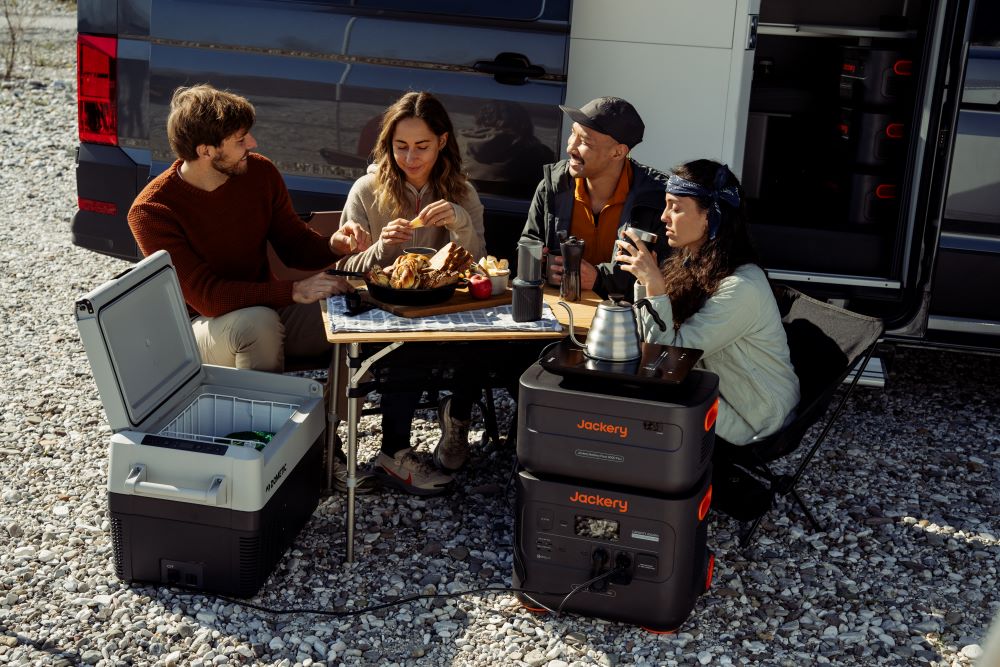







Leave a comment